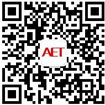锂电池——波音787电池事件1
0赞波音电池事件,虽然与新能源汽车关系不大,不过也算是对电池产业产生了很大的影响。在这里,对这次事件来进行梳理。
波音对事件的反应说明:
2013-01-16 波音公司关于787的声明
英文版本的声明链接:
| Jan. 8, 2013 | Boeing Statement on Japan Airlines 787 Event in Boston |
| Jan. 11, 2013 | Boeing Statement on FAA Joint Review on 787 |
| Jan. 11, 2013 | Boeing CEO McNerney Statement on Joint FAA, Boeing 787 Review |
| Jan. 16, 2013 | Boeing Statement on Federal Aviation Administration 787 Action |
| Jan. 24, 2013 | Boeing Statement on U.S. National Transportation Safety Board 787 Investigation Update |
| Feb. 7, 2013 | Boeing Statement on U.S. National Transportation Safety Board 787 Investigation Update |
| March 12, 2013 | Boeing Receives FAA Approval of Certification Plan for 787 Battery Solution |
| March 14, 2013 | Boeing Provides Details on 787 Battery Improvements |
| April 5, 2013 | Boeing Completes Certification Testing for New 787 Battery System |
| April 19, 2013 | Boeing to Begin Modifying 787s as FAA Approves Battery Improvements |
| May 9, 2013 | Boeing Rolls Out First 787 Dreamliner at Increased Production Rate |
更为细致的时间表在《Boeing 787 Battery Events Timeline》这个文件里面。
技术在线的报道(日.本.人的吐槽):
2013-01-11 “ 波音787” 辅助动力装置的电池起火,美国家运输安全委员会开始全面调查
调查报告和相关的资源:National Transportation Safety Borad的事故调查链接:Boeing 787 Battery Fire。
谈谈我个人的看法:
1.至今为止没有复现或者说调查出来到底是什么问题
这块的内容,将在后续做一些介绍。
3.从系统上来看,波音对于电池方面的认知和设计已经很详细,也有详细的安全方面的评审,所以(锂)电池&电池系统这个东西:江湖越老,胆子越小啊。
3.1 波音对于电池系统&充电系统的设计开发时间轴
花了7年时间开发到安装,我个人有些疑问,在开发、试制和测试等阶段,整个电池单体产线是否变化。锂电池直接决定于产线的情况,即使是好的设计,在产线工艺调整和优化过程之中也有了一些变化。特别是波音的用量又不大的时候,波音投下去测试钱可能由于GS的更改而失去意义。
选自《Battery System Design and Development》P9
3.2测试和验证
从下面的表格来看,对单体和电池,已经做了很详尽的工程测试和产品验证。
选自《Battery System Design and Development》P12~P14
3.3 BMS到底多有用?
该有的都有了,但依旧阻止不了事故的发生,着力点还是在于单体的安全性上面。
The four BMU circuits contain three independent levels of celllevel over-voltage protection, one of which activates the contactor. The BMUs inhibit charging when an over-discharge condition is detected within the battery. A negative thermal coefficient (NTC) and a positive thermal coefficient (PTC) thermistor monitor temperature on two centermost cell-to-cell busbars . The NTC, which is covered in epoxy, inhibits charging at the BMU level on over- or under-temperature conditions. The NTC temperature is reported to the BMU. The PTC temperature is reported to the battery charging unit (BCU). The BMU performs cell balancing on cells over 4.00 V and monitors overall battery voltage for under-voltage conditions. BIT circuits on BMU 1 and BMU 2 provide independent evaluation of battery failure conditions. Voltage and temperature measurements are taken with sense wires positioned across the top of the battery .





